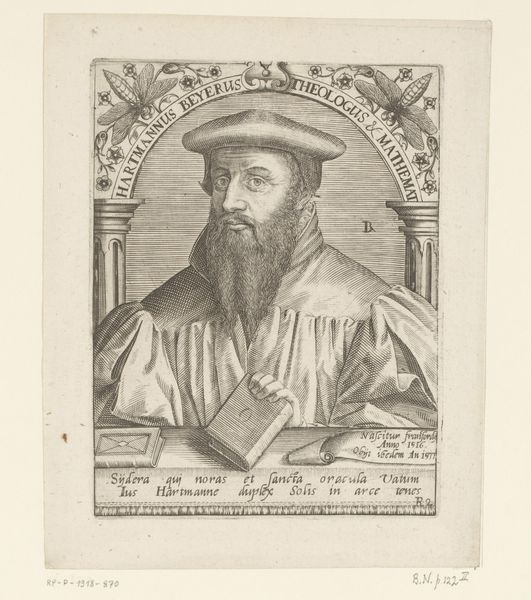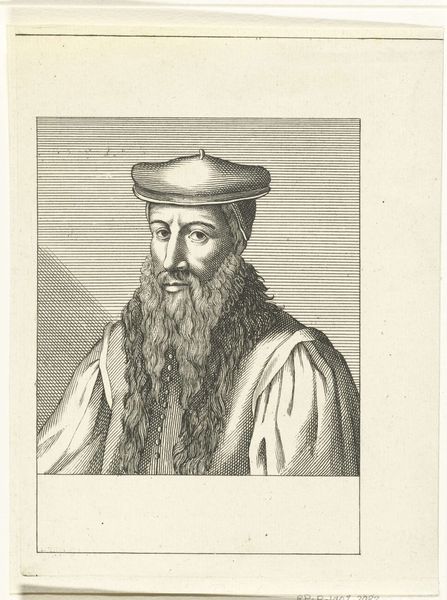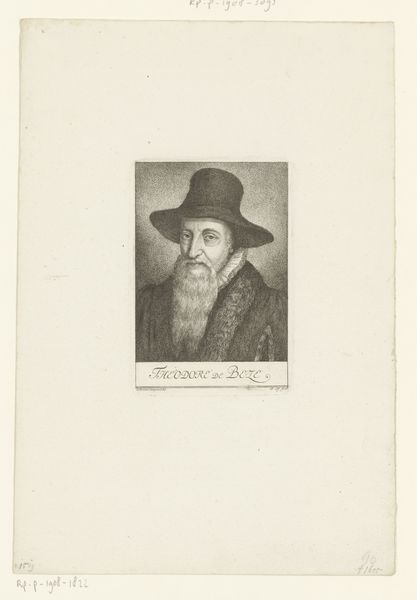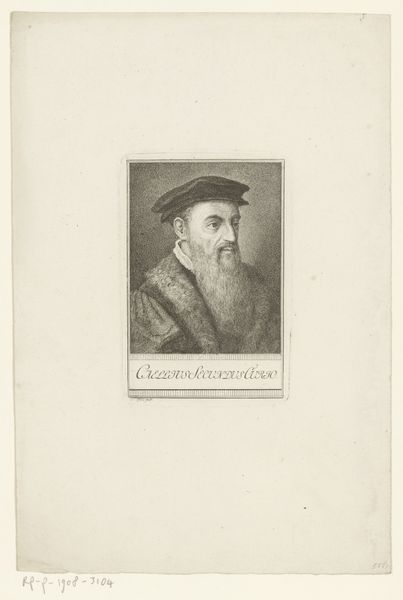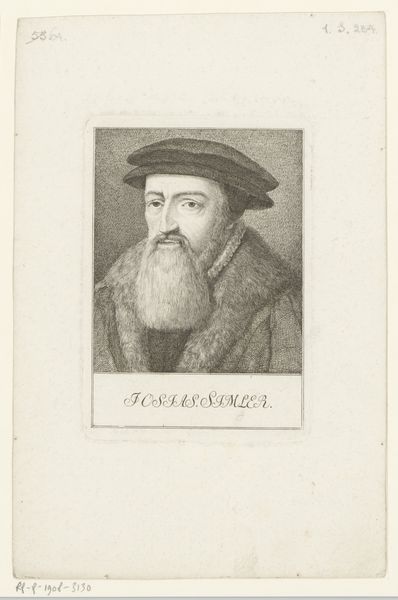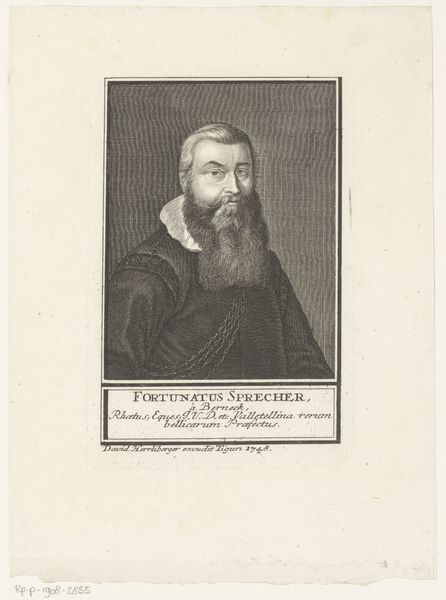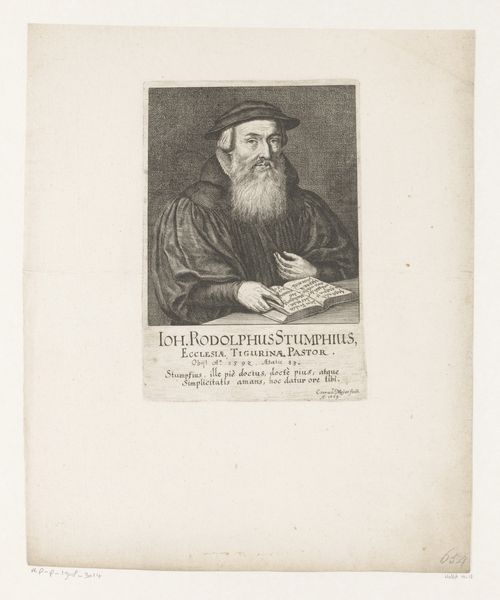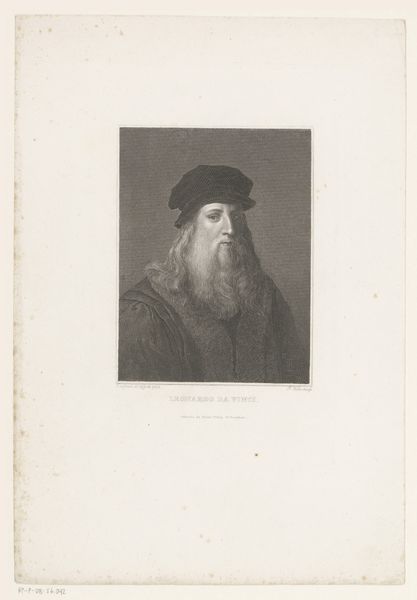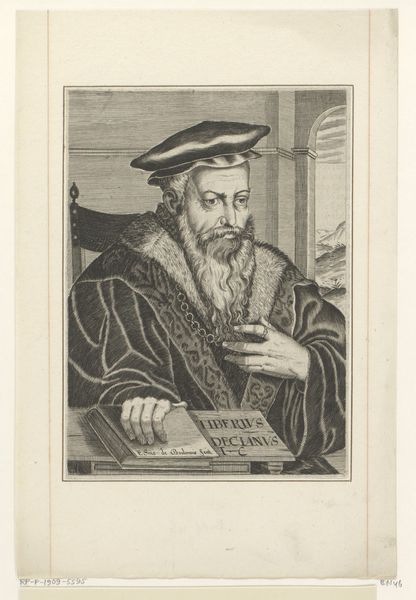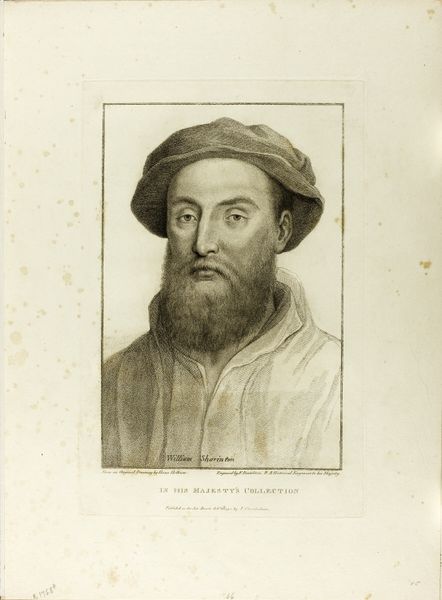
drawing, print, engraving
#
portrait
#
pencil drawn
#
drawing
#
neoclacissism
#
aged paper
#
16_19th-century
#
yellowing background
# print
#
pencil sketch
#
historical photography
#
portrait reference
#
19th century
#
history-painting
#
engraving
Dimensions: height 245 mm, width 203 mm
Copyright: Rijks Museum: Open Domain
Curator: Before us is a portrait of John Calvin, the influential theologian. This print, dating from 1801-1858, is attributed to Moritz Steinla, here at the Rijksmuseum. Editor: There's something compelling about the starkness of the engraving. The aged paper lends a solemn air, almost a textural echo of the weighty ideas associated with Calvin. Curator: Indeed, it's a carefully crafted image, resonant with symbolic meaning. Consider the severe profile, the dense beard. This echoes his firm doctrine and austere life. It presents Calvin as a man of God who tolerated no dissension. Editor: The layering of textures created through the engraving process fascinates me. From the smooth skin to the rough, fur-lined coat, there's such material differentiation, each achieved through essentially the same process. One can almost trace the engraver's hand, cutting away at the plate to manifest these details. Curator: And how deliberate are these visual choices! The gaze averted, suggesting introspection. His dress signifies religious authority, though modestly. These portraits cemented his image as a scholar and a divine voice of moral guidance. Editor: Yet, viewing this now, I see how images of authority are constructed—through skillful deployment of reproducible technologies. The lines, the paper itself...all contributing to a constructed image that circulates broadly, impacting the social fabric. Consider the labour needed to make such copies...it is an industry. Curator: Absolutely. And Steinla has tapped into a deep well of visual language—a tradition that casts Calvin as a figure of unyielding strength. Every element works towards reinforcing his significance in religious and intellectual history. Editor: So, this simple portrait encapsulates much, from the intense labour of printmaking, the material processes behind its execution, to its function as a mass produced ideological image that served particular historical and religious imperatives. It shows the power of materials to move the faithful, in both past and present times. Curator: Yes. The portrait gives insight into not only Calvin himself but how symbols endure to transmit historical power and its interpretations across generations. Editor: A lasting testament, if you will, to the force of representation through material culture.
Comments
No comments
Be the first to comment and join the conversation on the ultimate creative platform.
